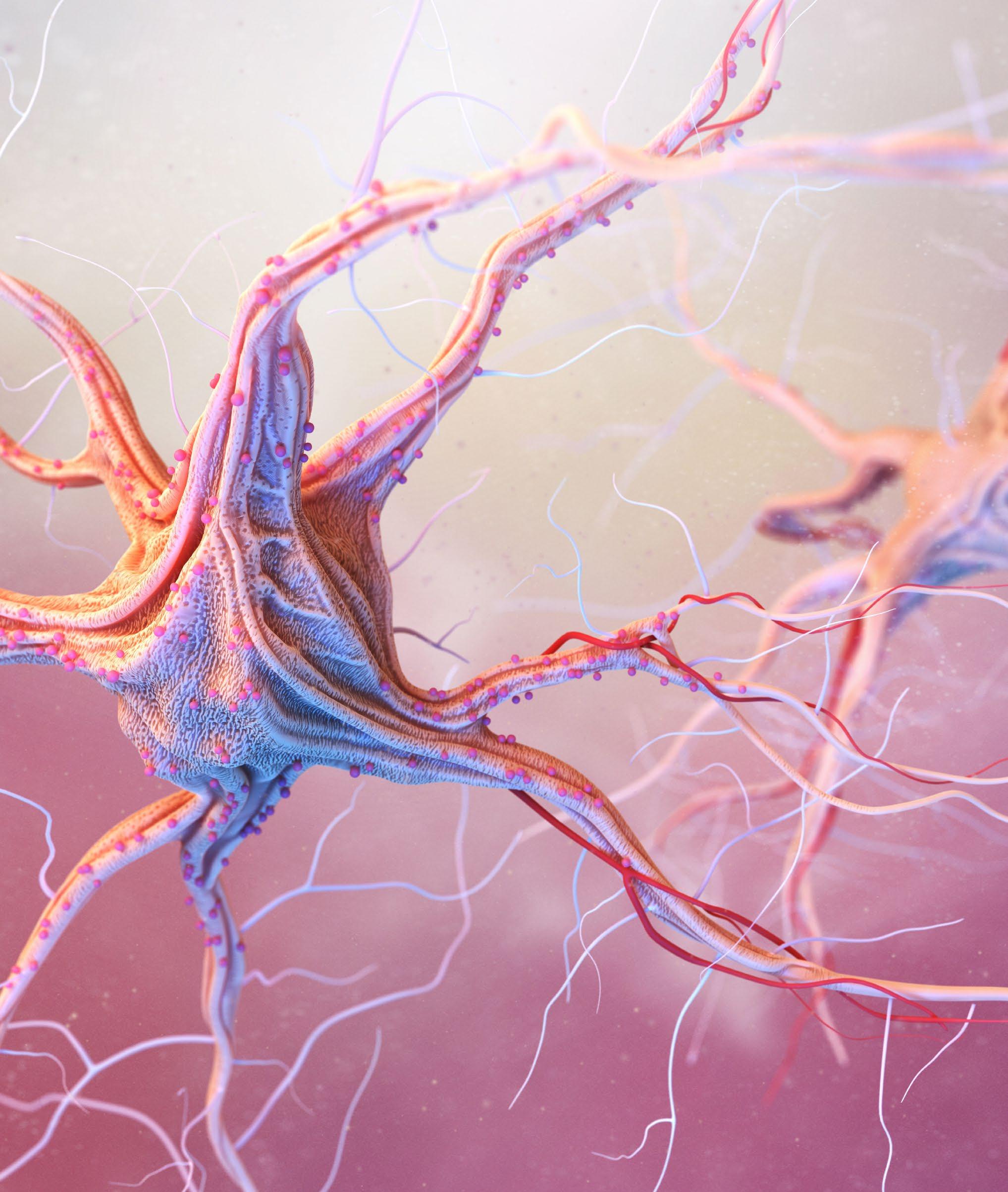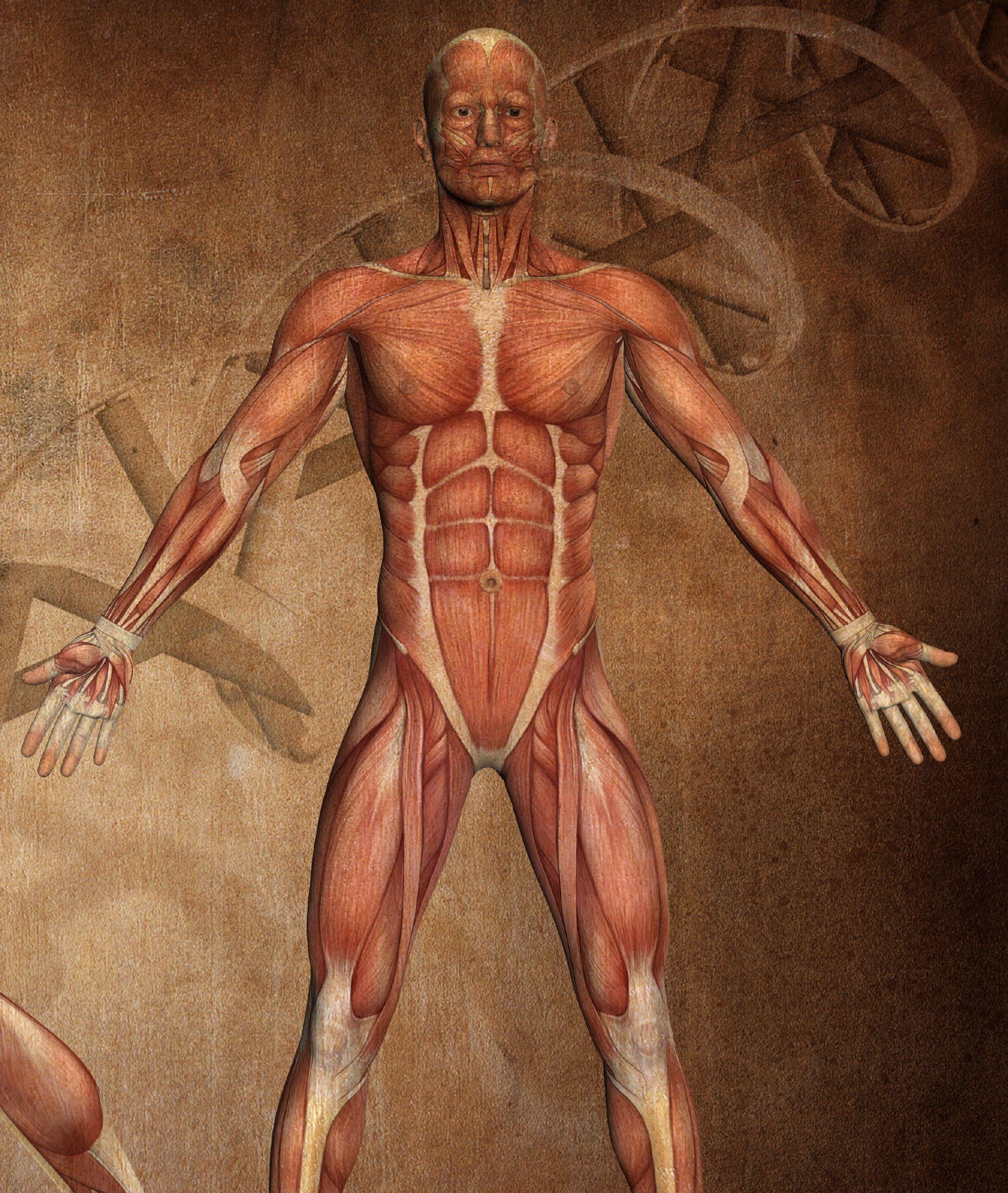Anatomy
(Teacher’s Manual)

200 hr. Yoga Teacher Training Curriculum


















200 hr. Yoga Teacher Training Curriculum
















Adriana Elmes MA, 500 E-RYT, RYS








When we practice or teach yoga, we experience the effects on our muscular and skeletal systems in obvious ways. We experience tension, contraction, stretching, softening of our muscular system. The skeletal system supports our body in all of these poses. Our respiratory system we can experience in deeper ways when we are practicing various pranayama exercises. Our nervous system is impacted by all these activities either exciting it or calming it. We will start with a general overview of the brain, the regions of the nervous system called central and peripheral nervous systems, and the functional differences between the somatic and autonomic systems. We will explore how stress impacts this system and how yoga, pranayama, and meditation can support this system.
Paul MacLean, a physician and neuroscientist, explored the evolutionary development of the human brain. He created a model that shows how the human brain evolved from a reptilian brain to our highest-level mammalian brain. Within the structure of our brain, he states, we have a primitive component, called the hindbrain, which is responsible for the basic physical and unconscious functions. This is the reptilian part of our brain. The midbrain, the early mammalian brain, is responsible for memory, emotion, bonding reactions, and fight or flight. One can consider it the emotional part of your brain. The highest level of our brain is the forebrain, or the rational brain. This comprises the neocortex, which is the largest part of the cerebral cortex. The cerebral cortex is the outer layer of the cerebrum. This area is for conscious activities such as reading,
Human Brain - Rational
Mammalian - Emotional
Reptilian - Survival
writing, language, thought, cognition, and motor commands (Institute, 2019). Neuroscience has found that the often brain activates all three systems at once so this model is a simplification of how the brain functions.
When we are under stress, humans shift from using the cerebral cortex or forebrain to the midbrain and hindbrain. These evolutionary brain regions overlay the anatomical parts of the brain. The neocortex, cerebral cortex, and cerebrum are all in the forebrain.
Brain stem – basic needs. The gateway from the spinal cord to the rest of the brain
Cerebral cortex – the outer layer of the cerebrum. Neural integration in the central nervous system. Memory, attention, perception, awareness, thought, language, consciousness
Prefrontal Cortex – conscious thinking and emotional regulation

Neocortex – the largest part of the cerebral cortex. Sleep, memory, and learning processes
Cerebrum – integrates information the brain receives. The entire upper part of brain
Cerebellum – motor control, motion, memory. Underneath the cerebrum Thalamus – regulates the brain
Amygdala – prepares you to fight back before you can assess
An example of how yoga impacts the brain, is that yoga increases the activity in the prefrontal cortex. When you increase activity in the prefrontal cortex, your stress lowers (Swanson, 2020)
Another example of how the brain is impacted by yoga is that yoga decreases activity in the amygdala. The amygdala works with the prefrontal cortex to process and respond to fear (Swanson, 2020) (eco). If there is decreased activity in the amygdala, our sense of fear or hypervigilance can decrease. If yoga impacts parts of our brain, we are essentially training our brain to process and respond to fear and stress more effectively.
The nervous system is divided into two main parts: the peripheral nervous system (PNS) and the central nervous system (CNS).
• PNS are the nerves that run down the limbs and out into tissues
» Somatic
» Autonomic
• CNS is the brain and the spinal cord
» Spinal cord protected by vertebrae
» Brain stem – primal part of the brain
» Hemispheres, left and right
Neurotransmitters are naturally occurring chemicals that send signals or messages between nerves. Each nerve has its own balance of neurotransmitters. There are two kinds, calming and stimulating, which keep us awake or prepare us for rest. We need stimulating neurotransmitters to think and react fast. We also need calming neurotransmitters to help recover from periods of stress, to calm down, and to sleep. All of these affect mood, energy, focus, sleep, and memory.
• Serotonin – calming and made in the gut
• GABA – calming, counter exposure to chronic stress. Can become depleted
• Glutamate – stimulating, help you think, learn, and remember
• Dopamine – stimulating, ability to experience pleasure, mood, movement, mental process. Converts to adrenaline
• Adrenaline – (norepinephrine + epinephrine) gives bursts of energy, strength, and power. Increase heart rate, sweat, mood, and focus. Long term stress causes adrenaline depletion
When your students leave the studio feeling happy, relaxed, and blissful, you know that they were able to create those emotions through their yoga practice. Throughout their yoga, including asana, pranayama, and some level of meditation, they have released neurotransmitters eliciting these wonderful feelings.
Stress is defined as the ability of the body to adapt to changes in our environment. Note, stress is how we adapt to change. Stress is not inherently bad. Stress is unavoidable, it is how we handle and process it that matters. Stress can be good as it helps us prepare for a challenge. Stress can also be a positive thing, like preparing for a vacation or wedding. The body is preparing for a change.
• Increase neuroplasticity – brain change
• Increase synaptic connections – memory and recall
• Increase frontal lobe function – reasoning and decision-making
• Increase brain volume – memory
• Increase positive brain frequencies – theta and alpha
Yoga gets you into your body and has you focus on your breath. With controlled breathing, your heart rate may drop. Postures can help you release tension. Various styles of yoga, such as restorative, hatha, Iyengar, and yoga nidra, all can help release tension.
Before all this research, Iyengar taught a yoga approach intended to help release pain and heal the injury. He used props and modified poses. He believed supporting the body with props facilitates the body toward healing. The various poses can elicit physiological responses that can aid the healing process (Lasater, 1995). Today, we would probably term that the relaxation response. The relaxation response can be elicited through yoga.
Herbert Benson is a Harvard researcher who explored the mind/body connection. “The response is defined as your personal ability to encourage your body to release chemicals and brain signals that make your muscles and organs slow down and increase blood flow to the brain.” (Mitchell, 2013).
Yoga increases the body’s awareness and emotional intelligence so we can control our stress responses. Stress is not inherently bad, it’s our body reacting to change. Through posture, breath, and control of our monkey mind, we can help control how we perceive and respond to change.
We know that shifting our nervous system from fight/flight/freeze mode to our rest and digest mode will improve our well-being. We have all
experienced the effects of our asana classes. After class, we have this post-yoga glow. This comes not only from the asanas but also from the enhanced breathing during class.

The first thing we do when we experience stress or stressors: we shift our breathing. Whether imagined or real, whether physical, emotional, or psychological stress, our nervous system responds the same way. The nervous system will shift to stress mode. If the stress becomes chronic, our nervous system forgets what is normal. If we stay in this constant state of stress, our bodies lose the ability to go back to baseline. Stress can interfere with our breathing patterns. There are various ways our breath can shift, such as chest, collapsed, hyperventilation, breath grabbing, and frozen chest breathing. (MacLean, 1990)
There is no real normal to breathing. Our rate or volume switch is based on need. We can develop patterns of irregular breathing, impacting rate, and volume. But we can use the breath to facilitate a de-stressing effect. Being aware of how we can control our breath will help to elicit a down regulation of the nervous system (Farhi, 1996). Mindful breathing can help you calm down. Each exhalation relaxes the heart muscle, resulting in increased parasympathetic activity (Institute, 2019).
When we breathe, the diaphragm directly stimulates the vagus nerve. This impacts the parasympathetic and sympathetic nervous systems. The vagus nerve, the tenth cranial nerve, is a primary nerve of the PNS. The vagus nerve is myelinated above the diaphragm and regulates the heart and lungs. Below the diaphragm, the vagus nerve is unmyelinated and regulates the gut and abdominal organs.
The “vagal break stops the sympathetic nervous system dominance and regulates the heart rate via vagal activation. This action promotes relaxation, self-soothing, growth , and repair. [This] activates the parasympathetic nervous system” (p.240) (Institute, 2019). The sympathetic (fight/flight/freeze) dominance can be released through vagal nerve toning/ activation such as belly breathing, extended exhales, and kapalabhati.
When you go into Google Scholar and look up articles on meditation effects, there are 503,000 articles listed. To narrow all this down, we will summarize by stating that meditation calms the mind, slows racing thoughts, increases neuroplasticity, and decreases heart rate and blood pressure. Research has shown when people meditate for fifteen to twentyfive minutes, both brain hemispheres begin working together. People gain whole-brain functioning. Humans tend to be left- or right-side dominant, each side having different jobs. The left side is more logical, analytical, and detail-oriented. The right side is more intuitive, creative, and artistic. Meditation appears to strengthen both sides. Both sides are activated, displaying better focus and alertness, stronger memory, and better intellectual functioning. People report being happier, more peaceful, and balanced emotionally (eco).
When we teach yoga, pranayama, and meditation, we should be aware of how powerful these tools are to our nervous system. We should have a general understanding of how our nervous system works and then how outside factors can influence its functioning and health. Utilizing our tools skillfully can facilitate health and well-being in all of our students.

Understanding anatomy is a fundamental component when learning yoga postures. For us to safely practice and to safely teach asana, we need an understanding of how the muscles and bones connect, engage, stretch, and contract. We need to create space in the body to create movement.

We can do that by understanding how, for example, when the arm externally rotates, we can free the scapulae, to allow for a more effective extension when raising the arms. Or when we cue “slide your shoulder blades down the back”, that we need to tell them how to do that. Asking your students to lower your shoulders from their ears, gently squeeze the space between their shoulder blades, lift through their breastbone. If we have a vocabulary that includes the basic bones and muscles, we can more effectively give cues and adjustments.
If you see someone in Up Dog, sagging in their lower back, we know what that is doing to their spine and also can have a sense of what might be
restricting them.
Knowing how the body can be restricted and tight, via understanding musculature, helps you to sequence your classes in safer ways. If you want to do camel pose towards the middle or end of your class, what do you need to be sure to open, or stretch to prepare them for this pose? If you want to do forearm balance, should we be working on opening the chest and shoulders and hamstrings?
Our in-class workshop sessions will walk you through alignment and engagement of muscles needed to do the poses safely. What we have included here is a self-study through a fantastic website called Muscle & Motion. This website lets you explore poses through video and interactive video. You will be able to click through exercise analysis, common mistakes and active muscles. This will give you a depth of understanding that will nicely integrate with the live asana work in the classroom.
You will see on the left side a search bar and menu. You will be using a few different sections within the index. The colors in the workbook below correspond to the area in the index. We will bounce back and forth, in the index between Asana, Muscular and Kinesiology & Skeletal. The colors indicate a different section or category.
This section is focusing on more general concepts, kinesiology, posture, breathing and sections of the body. Please explore each topic and then answer the questions.
1. Go to the Muscle and Motion website.
2. Log-in Pages
3. Yoga App Log-in
4. Choose your device
5. Create Account
6. Log-in
Menu:
Go to the Asana section -- Core Asana -- Theory Section
Go to Muscular Anatomy section
Go to Kinesiology & Skeletal
Study each topic, click through the various aspects, explore by hovering over the images and clicking the various tabs.
1. What is the median axis
It is like a string that is stretched when someone straightens up
2. What is string weakness?
The compression of the body when standing
3. How can you improve posture?
Use imagery
1. What does the head triangle consist of?
Center point on top of the head, the two sides descending to the top of the scapula on the shoulders.
2. What causes shortening and weakening of the anterior neck?
Forward head posture
3. What is the number 5 muscle?
1. What is the chest triangle?
Center of the chest bone, the two sides of the ASIS on the front of the pelvic bowl.
2. How do you prevent the body from sinking the chest triangle?
Lengthen the sides of the triangle and push the head upward and move ears away from shoulders.
3. A ballet teacher told me that if I imagine a cord lifting my sternum, your shoulders can naturally shift back and down to avoid this collapsing. Why don’t you give it a try!
Navel Triangle
1. What comprises the navel triangle?
Center of the navel, two sides descend to the center of the feet.
2. What can a weak Navel Triangle cause? Sway-Back posture
5. Asana – Core Asana – Theory - Ideal Postural Alignment –Important Emphasis
1. What does the little guy pull from above? Feet
2. Name 3 yoga poses do they demonstrate to help practice proper triangle alignment?
Tadasana, Twisting hand to foot, awkward chair, plank, lunge, tabletop, boat
6. Asana – Core Asana – Theory - Ventilation, Kinesiology of Ventilation
1. What are the joints that are active when we breathe?
Costovertebral joints, sternocostal joints, thoracic spine vertebrae
2. Name 3 active muscles involved in breathing
Scalene muscles, sternocleidomastoid, pectoralis major, Intercostal muscles, diaphragm, latissimus dorsi, serratus posterior superior, erector spinae, levatores costarum, quadratus lumborum
7. Asana – Core Asana – Theory - Timing of Respiration when Performing Rotation
1. What compresses when rotating?
Obliques and transversus abdominus
2. Does exhaling or inhaling enhance rotation?
Exhaling
3. When you rotate on an exhale does it feel like? (circle one)
a. you are being wrung out like a wet towel
b. like a balloon deflating
c. someone giving you a raspberry burn

Login to Muscle and Motion website. You have to select Yoga in the upper left banner. The left index, find the “Asanas” section. You can either search via the pose name. There will be a list of Core Asana, Backbends, Forward Bends, Rotation, Standing & Balance, Sitting and Reclining Postures. You can find the poses in the lists or you can search for a specific pose. If you do that, try both the Sanskrit and the English translation. Please explore each pose and then fill out the questions below.
1. Mountain pose position usually serves as a starting position for all standing positions, but it should be practiced __________ .
Separately
2. Mountain pose is a __________ position.
Very intelligent
3. How many triangles are factors in this pose? Three
1. How is their arm position different from what we typically teach?
Their arms are stretched forward
2. How do we fix the common problem of tight hamstrings?
Rest hands on your blocks or bend your knees
3. What muscle prevents the body from falling over?
Gluteus maximus
1. How do they illustrate the common mistake of a sagging lower back?
Grey brick on the lower back
2. What can be used to help a student feel their body in the proper position?
A wooden rod/pole – Sacrum, center thoracic vertebrae and back of head
3. What is problem #2?
Sore wrists during plank or the pushup
4. Urdhva Mukha Svanasana – Downward Facing Dog
1. What does Downward Facing Dog do for your body?
Lengthens the back legs and back, and strengthens the shoulder girdle
2. What is the Superficial Back Line?
Interconnected lines referred to in Thomas Myers book, Anatomy Trains
3. What is problem #3? Review the solutions.
Functional shortening of the chest muscles causing rounding of the upper back and creates and angle between the arms and trunk.
1. What are the two areas that get focused movement in this posture, and can lead to future issues?
Strong flexion in the lower back and too little movement in the hip joints
2. What muscles help to flex the spine?
The abdominal muscles and the biceps brachii help flex the spine and hip joints.
3. Review Exercise Analysis #2. Great explanation as to why you tell your students to bend their knees.
1. Watch the various exercises that can be done to open up thoracic mobility.
2. What should you do if you cannot bring heels to the floor?
Decrease flexion in the knees and/or stand with small elevation under the heels.
3. What color are the trapezius muscles? Yellow
7. Utthita Trikonasana – Extended Triangle
1. What is the muscle that turns the head in this posture?
Sternocleidomastoid
2. What are the cartoon green guys demonstrating?
The stretching/lengthening of the external obliques, gluteus medius, hip adductors and hamstrings
½ Forward Fold 32 A
Adho Mukha Vrkrasana 45
Adrenaline 14
Anahatasana 43
Ananda Balasana 43
ANS 11
Ardha Chandrasana 2 37
Ardha Matsyendrasana 43
Ardha Uttanasana 32
Asana – Core Asanas – Theory - Core Muscles – Activation of Core
Muscles 30
Asana – Core Asanas – Theory - Core Muscles – Function of Core Muscles
29
Asana – Core Asanas – Theory - Core Muscles – Function of Internal Unit
30
Asana – Core Asana – Theory - Effects of Vertebral Rotation on Respiration
Functions 27
Asana – Core Asana – Theory - Ideal
Postural Alignment – Chest Triangle
25
Asana – Core Asana – Theory - Ideal
Postural Alignment – Head Triangle
24
Asana – Core Asana – Theory - Ideal
Postural Alignment – Important
Emphasis 25
Asana – Core Asana – Theory-Ideal
Postural Alignment – Median Axis
24
Asana – Core Asana – Theory - Ideal
Postural Alignment – Navel Triangle
25
Asana – Core Asana – Theory - Timing of Respiration when Performing Rotation 26
Asana – Core Asana – TheoryVentilation, Kinesiology of Ventilation 26
Asana Theory & Kinesiology 23
autonomic 8, 12, 15
Awkward Chair 34
axon 13 B
Baddhakonasana 41
Balasana 45
Bhagerasana 46
Bharadvajasana 44
Bhujangasana 38, 46
Bound Angle Pose 41
Bow 40
Bridge 38 C
Camel 39
Cat 46
central nervous system 9, 10, 12
Child’s 45
CNS 10, 12, 13
Cobra 38, 46
D
Dandasana 40
Danurasana 40
dendrites 13
Dopamine 14
Downward Facing Dog 33
E
Eagle 36
Easy Pose 42
Extended Puppy 43
Extended Triangle 34
F
Feet Spread Intense Stretch 35
Fish 39
G
GABA 14
Garland 47
Garudasana 36
glial cells 12, 13
Glutamate 14
H
Halasana 37
Half Boat 41
Half Lord of the Fishes 43
Half Moon Balance 37
Handstand 45
Happy Baby 43
Headstand 46
Head to Knee 38
Herbert Benson 16
Hero 42 I
Iyengar 16 J
Janu Sirsasana 38
K
Kinesiology & Skeletal- Head and Neck 27
Kinesiology & Skeletal – Legs 28
Kinesiology & Skeletal– Torso 27
Kumbhukasana 33
Lotus 42 M
Malasana 47
Marichyasana 44
Marjaryasana 46
Matsyasana 39
meditate 18
Mountain 32
Muscular Anatomy – Head and Neck 28
Muscular Anatomy – Lower Legs and Feet 29
Muscular Anatomy – Torso 27
Muscular Anatomy– Upper Legs 29
N
nerves 10, 11, 12, 14
Nervous System and Meditation 18
Nervous System and Pranayama 16
neurons 11, 12, 13
neuroplasticity 16, 18
neurotransmitters 11, 13, 14
nidra 16
Padmasana 42
parasympathetic 11, 15, 17
Paripurna Navasana 41
Parivrtta Parsvakonasana 35
Parivrtta Trikonasana 35
Paschimottanasana 38
peripheral nervous 8, 10, 11, 12
Plank 33
Plow 37
PNS 12, 13, 17
Prasarita Paddotanasana 35
R relaxation response 16
rest and digest 11, 15, 16
Revolved Side Angle 35
Revolved Triangle 35
S
Sage Twist 44
Salamba Sarvangasana 45
Seated Forward Bend 38
Serotonin 14
Setu Bhandasana 38
Shoulder Stand 45
Sirsasana 46
SNS 11
somatic 8, 10, 12
Sphynx 46
Staff Pose 40
Standing Forward Fold 34
Structures of the Brain 9
Sukhasana 42
sympathetic 11, 15, 18
T
Tadasana 32
Triune Brain 8
Twist 44 U
Upward Bow 40
Upward Extended Feet 47
Urdhva Danurasana 40
Urdhva Mukha Svanasana 33
Ustrasana 39
Utkatasana 34
Uttanasana 34
Uttana Shishosana 43
Utthita Trikonasana 34
V
vagus nerve 17
Viparita Karani 47
Virabhadrasana 3 36
Virasana 42
Vrksasana 37
W
Warrior 3 36